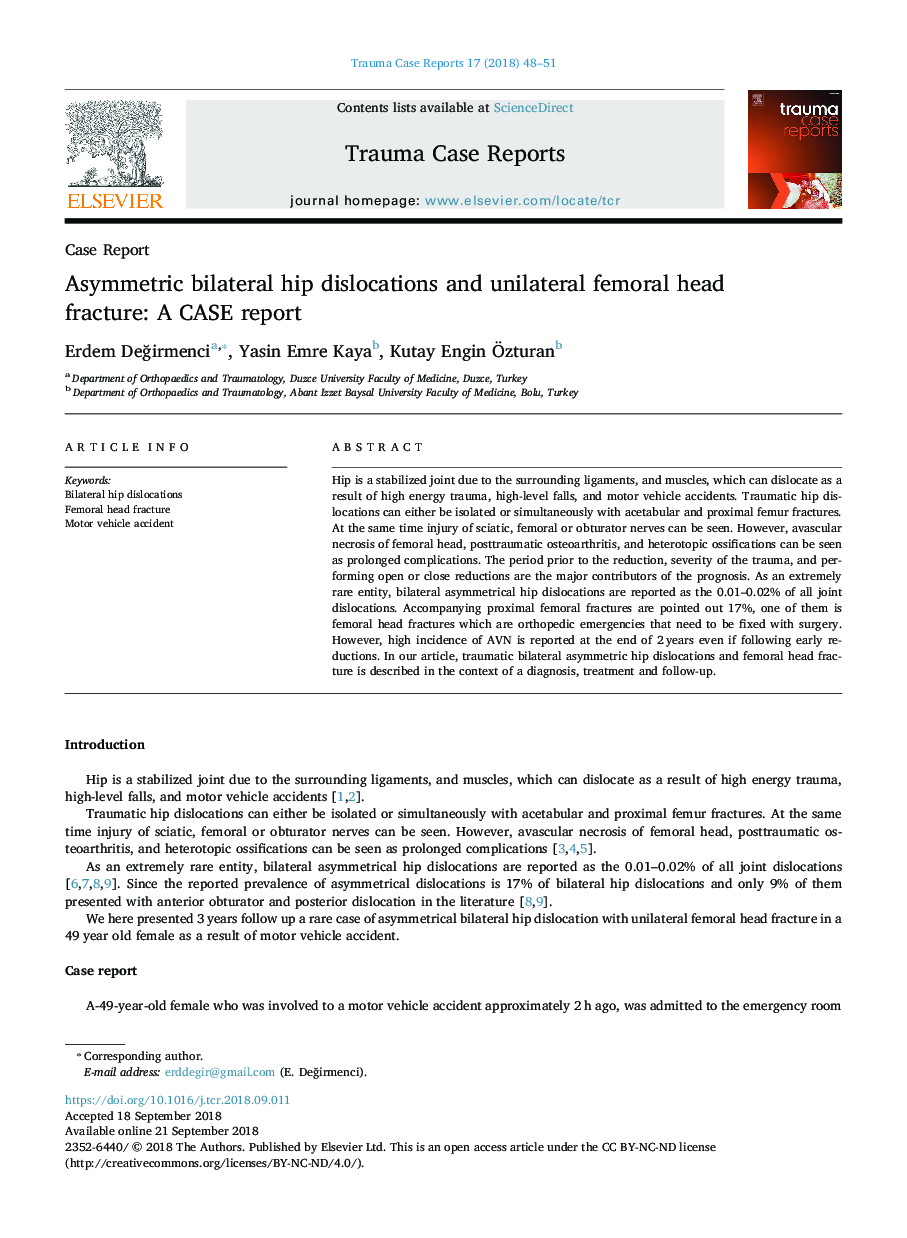| Article ID | Journal | Published Year | Pages | File Type |
|---|---|---|---|---|
| 11009443 | Trauma Case Reports | 2018 | 4 Pages |
Abstract
Hip is a stabilized joint due to the surrounding ligaments, and muscles, which can dislocate as a result of high energy trauma, high-level falls, and motor vehicle accidents. Traumatic hip dislocations can either be isolated or simultaneously with acetabular and proximal femur fractures. At the same time injury of sciatic, femoral or obturator nerves can be seen. However, avascular necrosis of femoral head, posttraumatic osteoarthritis, and heterotopic ossifications can be seen as prolonged complications. The period prior to the reduction, severity of the trauma, and performing open or close reductions are the major contributors of the prognosis. As an extremely rare entity, bilateral asymmetrical hip dislocations are reported as the 0.01-0.02% of all joint dislocations. Accompanying proximal femoral fractures are pointed out 17%, one of them is femoral head fractures which are orthopedic emergencies that need to be fixed with surgery. However, high incidence of AVN is reported at the end of 2â¯years even if following early reductions. In our article, traumatic bilateral asymmetric hip dislocations and femoral head fracture is described in the context of a diagnosis, treatment and follow-up.
Related Topics
Health Sciences
Medicine and Dentistry
Orthopedics, Sports Medicine and Rehabilitation
Authors
Erdem DeÄirmenci, Yasin Emre Kaya, Kutay Engin Ãzturan,
